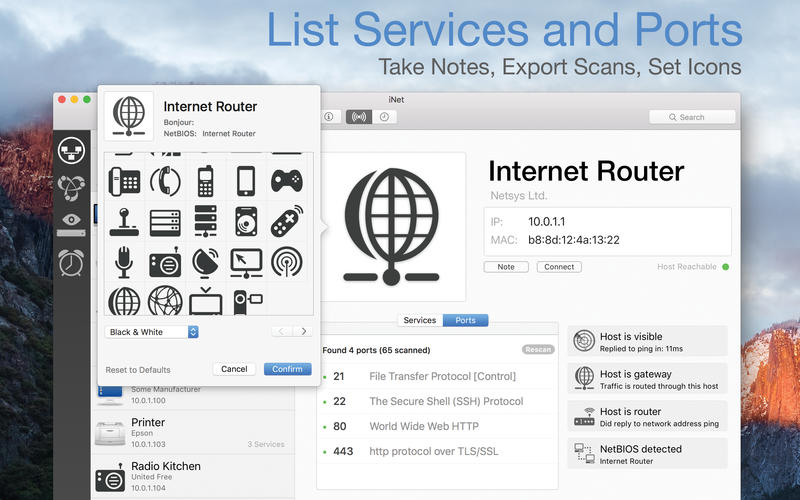
- #INET NETWORK SCANNER FOR PC HOW TO#
- #INET NETWORK SCANNER FOR PC SOFTWARE#
- #INET NETWORK SCANNER FOR PC WINDOWS#
You see different attributes and behavior. For example, if you’re looking at hosts running the “ protocol, there are many different ways you can ask questions depending on what perspective you come from. A lot of what we’re focused on is different aspects of a protocol.

ZD: I think long-term we do want to add coverage of additional protocols. It’s really been in the last year that we’ve started ramping up and adding scans more frequently.īK: What are your short- and long-term goals with this project? People who are more focused on comprehensive scans tend to be the more serious publications that are trying to do statistical or large-scale analyses that are complete, versus just finding devices on the Internet. ZD: Yes, there are close to two dozen papers published now based on broad, Internet-wide scanning. We certainly think that the benefits of publishing this information are huge, and that we’re just scratching the surface of what we can learn from it. MB: Because of the historic bias against scanning and this debate between disclosure and security-by-obscurity, we’ve approached this very carefully. I was curious to get their perspective on how public perception of widespread Internet scanning has changed over the years, and how targeted scanning can actually lead to beneficial results for Internet users as a whole. Bailey at the University of Illinois at Urbana-Champaign (MB) about their ongoing and very public project to scan all the Internet-facing things.

To get a gut check on this, I spoke at length last week with University of Michigan researcher Zakir Durumeric (ZD) and Michael D. Trying to put devices on the Internet and then hoping that someone or something won’t find them is one of the most futile exercises in security-by-obscurity. These days, complaining about being scanned is about as useful as griping that the top of your home is viewable via Google Earth.
#INET NETWORK SCANNER FOR PC WINDOWS#
When I was first getting my feet wet on the security beat roughly 15 years ago, the practice of scanning networks you didn’t own looking for the virtual equivalent of open doors and windows was still fairly frowned upon - if not grounds to get one into legal trouble.

The project, hosted by the ZMap Team at the University of Michigan, includes huge, regularly updated results grouped around scanning for Internet hosts running some of the most commonly used “ports” or network entryways, such as Port 443 (think Web sites protected by the lock icon denoting SSL/TLS Web site encryption) Port 21, or file transfer protocol (FTP) and Port 25, or simple mail transfer protocol (SMTP), used by many businesses to send email. One of the more benign is scans.io, a data repository of research findings collected through continuous scans of the public Internet. I couldn’t believe that people actually still cared about scanning, and I told him as much: These days there are countless entities - some benign and research-oriented, and some less benign - that are continuously mapping and cataloging virtually every device that’s put online.
#INET NETWORK SCANNER FOR PC HOW TO#
The -A (aggressive scan) option forces nmap to use operating system detection, version detection, script scanning, and traceroute detection.Not long ago I heard from a reader who wanted advice on how to stop someone from scanning his home network, or at least recommendations about to whom he should report the person doing the scanning. We can use nmap more aggressively to try to winkle more information out of the device. The device with IP Address 192.168.4.11 had an unknown manufacturer and a lot of ports open. RELATED: How to Turn a Raspberry Pi into a Low-Power Network Storage Device Unknown Device With Many Open Ports It uses Samba so that I can connect to it from any computer on my network.

This makes sense I use that particular Pi as a sort of mini-Network Attached Storage device (NAS). SMB is a means of sharing folders and files across a network.
#INET NETWORK SCANNER FOR PC SOFTWARE#
Samba is a free software implementation of Microsoft’s Server Message Block protocol (SMB). We’ve Lined Up The Suspects Let’s Make Them Talkĭevice 192.168.4.10 is a Raspberry Pi that has port 445 open, which is described as “microsoft-ds.” A quick bit of Internet searching reveals that port 445 is usually associated with Samba.


 0 kommentar(er)
0 kommentar(er)
